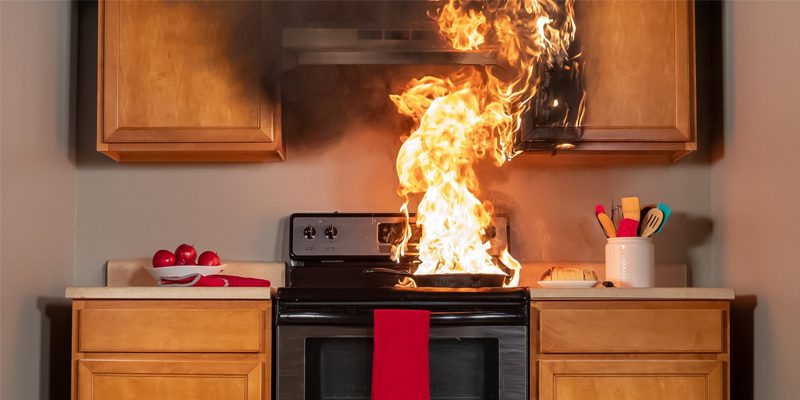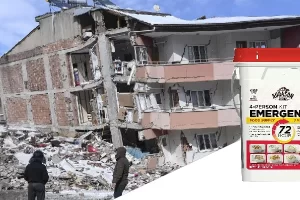The kitchen can be a potentially hazardous area, but by following safety practices, you can prevent accidents and promote a safe environment. Here are some tips to prevent accidents in the kitchen:
Supervision
Never leave the kitchen unattended when cooking, especially when using heat sources or sharp objects. Supervise children and pets to ensure their safety.
Fire Safety
Keep a fire extinguisher in the kitchen and learn how to use it properly. Avoid leaving flammable items, such as towels or paper, near stovetops. If a grease fire occurs, smother it with a metal lid or baking soda—never use water.
Proper Handling of Knives
Use knives with caution and keep them out of reach of children. Always use a cutting board, and never cut food while holding it in your hand. Store knives in a designated knife block or drawer.
Hot Surfaces and Burns
Use oven mitts or pot holders to handle hot pots, pans, and dishes. Keep hot surfaces and liquids away from the edge of countertops where they can be easily knocked over.
Safe Cooking Practices
Keep flammable objects, such as dish towels and paper towels, away from heat sources. Turn pot handles inward to prevent accidental spills. Use back burners whenever possible to keep hot pots and pans out of reach.
Electrical Safety
Ensure that electrical appliances and cords are in good condition. Avoid overloading electrical outlets and unplug appliances when not in use. Keep electrical cords away from hot surfaces.
Proper Storage
Store heavy items and frequently used utensils in easily accessible locations. Avoid storing heavy objects on high shelves to prevent them from falling.
Slip and Fall Prevention
Clean up spills immediately to prevent slips. Use slip-resistant mats near sinks and countertops. Keep the floor clear of clutter and ensure it is well-lit.
Child Safety
Use safety locks on cabinets and drawers containing hazardous items. Keep sharp objects and cleaning supplies out of reach. Teach children about kitchen safety rules and the dangers associated with hot surfaces and appliances.
Proper Food Handling
Practice safe food handling to prevent foodborne illnesses. Wash hands thoroughly before and after handling food, and use separate cutting boards for raw meat, poultry, and vegetables. Store perishable foods at proper temperatures.
Use Microwave Safely
Follow instructions and use microwave-safe containers for heating food. Open containers with caution to avoid steam burns.
Stay Organized
Keep your kitchen well-organized to reduce the risk of accidents. Place frequently used items within easy reach, and properly store sharp objects and heavy items.
Read Labels and Instructions
Read and follow product labels and instructions for appliances, cleaning products, and other kitchen items. This ensures safe and proper use.
Practice Good Ventilation
Use the kitchen hood or open windows when cooking to maintain proper ventilation and prevent the buildup of smoke and fumes.
Maintain a Clean Kitchen
Regularly clean and maintain your kitchen to minimize the risk of pests, bacteria, and other hazards. Clean appliances, countertops, and utensils thoroughly.
By implementing these safety practices in your kitchen, you can create a safer environment and reduce the risk of accidents and injuries while cooking and working in the kitchen.



